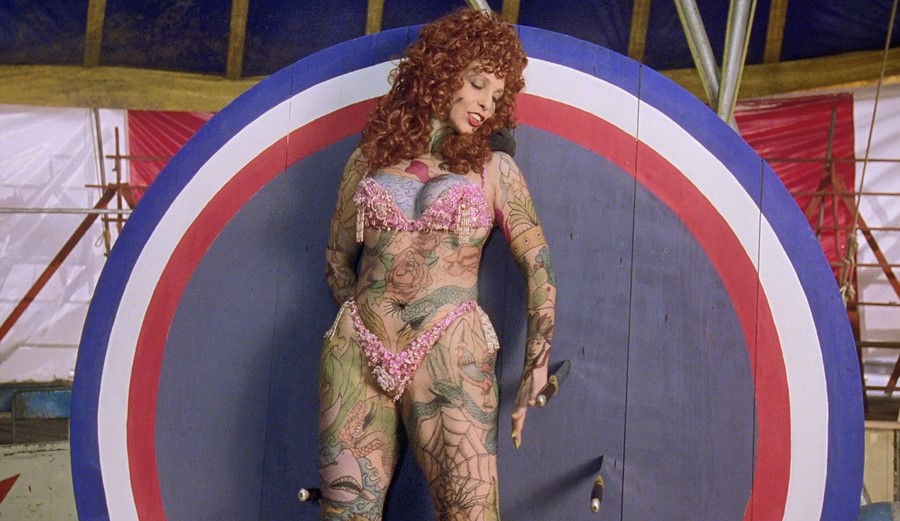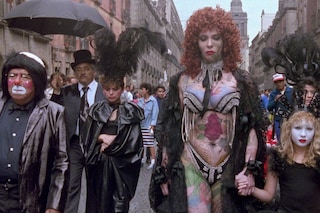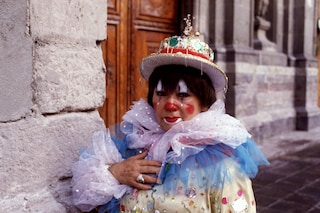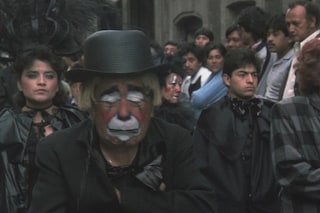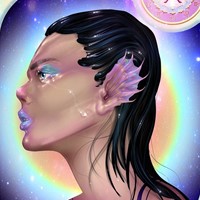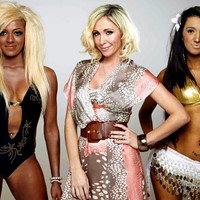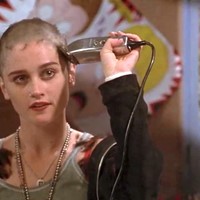In Alejandro Jodorowsky’s horrifying underground classic Santa Sangre, vaudeville make-up serves as a funhouse mirror to the most brutal of human impulses
Throughout the celluloid nightmare that is Santa Sangre – Alejandro Jodorowsky’s bizarre, morally murky 1989 horror – make-up and hair serve as a vivid emotional canvas. This is no small part thanks to the film’s initial circus ground setting. It’s here we’re introduced to mimes and clowns whose over-expressive faces serve as an uncanny mirror to the actions unfurling in the central plot.
At times, their grease paint-assisted moods are appropriate: during a funeral, the normally colourful clowns turn monochrome and bear prominent scowls. However, part of what makes a clown phobia more common than a fear of heights is the oddly unreadable nature of all that thick face paint. It’s not just make-up but, instead, a mask – one which renders the performer unrecognisable and not quite human. Logically, we know that clowns are just people, but we can’t help but find them difficult to look at, probably because they reflect the crudest parts of our nature back at us.
One of the film’s most striking beauty looks appears early on, when we witness protagonist Fenix’s unconventional childhood as a pre-teen magician. A member of the Circus del Gringo, he earns his keep by regaling an audience of strangers with cheap tricks. Looking like a miniature New Romantic, his hair slicked to the sides and his eyes blunted with kohl, he’s been taught that being himself isn’t enough to enrapture the crowds. Instead, he has to be a spectacle. In this world, emotions have to be outsized and readily readable in the ring – it’s where knife-throwing is foreplay, subtlety doesn’t exist and the stage make-up stays on.
If Fenix gets too human, too tender, and starts acting like a little boy and not a performer, he’s viscerally reprimanded. When he cries too loudly, his ringmaster father grabs Fenix and ties his arms and legs to a chair before performing a scarification ritual, where a swooping eagle is etched, line by line, onto his chest with a knife to ‘make him a man’. Later, when Fenix’s mother Concha catches her unfaithful husband in flagrante with the circus’s tattooed woman, she pours acid over his genitals and pulls the blonde wig off of his temple revealing the empty, bald head beneath it. In both instances, external physical appearances make inner and emotional narratives explicit.
The overstated masks of the circus feel hugely resonant today, in an era where we’re all forced to perform a version of ourselves online to the easily bored but ever-watching social media panopticon. Pushed to further and further extremes by the algorithm, we all subscribe to a notion of the bigger, the better, the bolder – but our own authentic tastes can easily get lost amid the constant need to create a spectacle.
This is part of what makes Santa Sangre so unnerving. It’s uncanny, filled with bold symbols – whether it be blood red nails or gory tattoos – which can be interpreted in many ways but which, in the end, refuse to be anything more than an amalgamation of images with no concrete meaning beyond whatever the audience wants to fill in. But, then again, isn’t this the same logic as the circus ring, where punters demand their pound of flesh – whether in the form of slapstick tumbles, exaggerated punches or the ritual humiliation of performers – and laugh, clap or cry without ever really knowing why?
